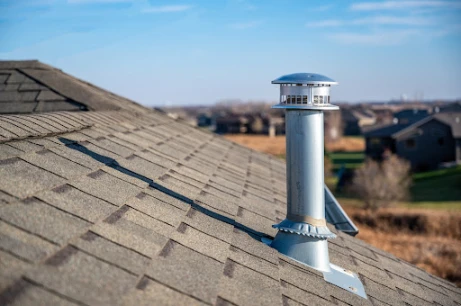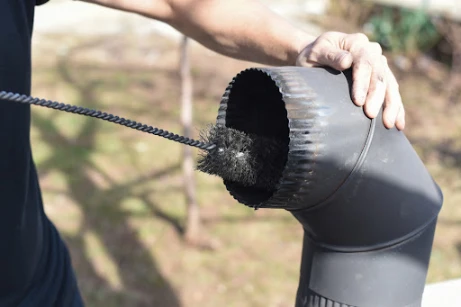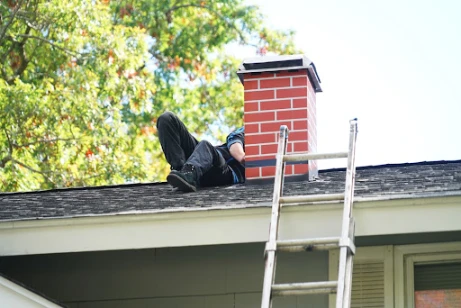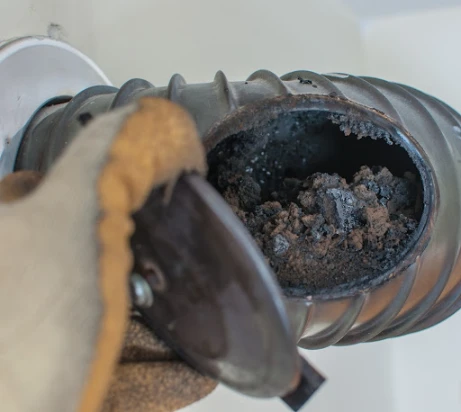Do Metal Chimney Flues Need Cleaning?

Maintaining a functional and safe chimney is essential for any homeowner. Among the various components of a chimney, the chimney flue plays a crucial role in venting harmful gases and providing proper airflow. In this article, we will explore the topic of whether metal chimney flues need cleaning. By understanding the importance of chimney maintenance and the role of flue cleaning, homeowners can ensure the safety and efficiency of their chimney systems.
Chimneys are subjected to constant exposure to heat, smoke, and combustion byproducts. Over time, these elements can cause the accumulation of creosote, soot, and other debris, leading to potential hazards such as chimney fires, carbon monoxide leaks, and poor ventilation. Regular chimney maintenance, including flue cleaning, is crucial to prevent these risks and maintain optimal chimney performance.
Understanding Metal Chimney Flues
Metal chimney flues play a crucial role in chimney systems, providing a pathway for smoke, gases, and particles to safely exit the chimney and be vented outside. These flues are constructed using a variety of metals, including stainless steel, galvanized steel, and aluminum. Each metal type offers distinct advantages and considerations.
Stainless steel flues are highly regarded for their exceptional durability and resistance to both corrosion and heat. They are suitable for various fuel types, making them versatile options for wood, gas, and oil appliances. Stainless steel flues are often chosen for their long-term durability and are commonly employed in high-efficiency heating appliances.
Galvanized steel flues, on the other hand, are coated with a layer of zinc to enhance their resistance to corrosion. They are cost-effective and frequently used in traditional chimney systems. However, due to their construction, they may not be suitable for high-temperature applications.
Aluminum flues are lightweight and cost-effective alternatives. They find widespread use in gas appliances and ventilation systems. However, it’s important to note that aluminum flues may not withstand the high temperatures associated with wood-burning or coal-burning appliances.
Metal flues offer several advantages. First, they are known for their durability and resistance to weathering, ensuring a long lifespan for the chimney system. Secondly, metal flues exhibit excellent heat resistance, allowing them to handle high temperatures without warping or deteriorating. Additionally, their prefabricated nature makes them easier to install compared to masonry flues, simplifying the construction process.
Despite these advantages, metal flues also present some disadvantages. Condensation buildup can occur within metal flues, particularly in the case of high-efficiency heating appliances. This issue requires proper insulation and maintenance to prevent potential problems. Furthermore, certain metals, such as galvanized steel, carry a risk of corrosion over time, which may affect their longevity and functionality. Finally, metal flues may have limited insulation capabilities compared to masonry flues, leading to potential heat loss from the chimney system.
In summary, metal chimney flues provide an efficient and durable solution for venting smoke and gases from chimneys. Stainless steel, galvanized steel, and aluminum are commonly used metals, each offering distinct advantages and considerations. While metal flues offer benefits such as durability, heat resistance, and ease of installation, they also come with drawbacks such as condensation issues, corrosion risks, and limited insulation. Understanding these factors can help homeowners make informed decisions when it comes to selecting the appropriate metal flue for their chimney system.
The Importance of Chimney Cleaning
Chimney cleaning is an essential task that encompasses more than just removing debris from the chimney itself. It serves several important purposes and plays a vital role in overall chimney maintenance. By understanding the significance of chimney cleaning, homeowners can ensure the safety, functionality, and longevity of their chimney systems.

Purpose of chimney cleaning
Chimney cleaning involves the removal of creosote and soot, which can accumulate in the flue over time. This buildup poses a significant fire hazard as creosote is highly flammable. Regularly cleaning the flue helps eliminate these combustible materials, reducing the risk of chimney fires and potential property damage.
In addition to preventing fires, chimney cleaning also ensures optimal airflow. A clean flue allows for proper ventilation, enabling smoke, gases, and particles to exit the chimney efficiently. This efficient airflow not only improves the performance of the chimney but also enhances indoor air quality.
Furthermore, chimney cleaning helps minimize the risk of carbon monoxide (CO) exposure. A blocked or malfunctioning chimney can cause carbon monoxide to seep into the living space, posing a serious health risk. Cleaning the flue reduces the likelihood of CO buildup, safeguarding the occupants of the home from the potentially fatal effects of carbon monoxide poisoning.
Potential hazards of neglecting chimney maintenance
Neglecting chimney maintenance, including flue cleaning, can lead to various hazards that compromise the safety and functionality of the chimney system. The accumulation of creosote increases the likelihood of chimney fires. A chimney fire can quickly spread to other parts of the house, resulting in extensive property damage and endangering the lives of those inside.
Furthermore, a blocked or dirty flue obstructs proper ventilation, causing smoke, gases, and particles to back up into the house. This poor ventilation not only affects the performance of the chimney but also leads to poor indoor air quality. Inhaling the pollutants and irritants from the backed-up smoke can have adverse effects on the health of the occupants.
Additionally, neglecting flue cleaning can result in the improper functioning of the chimney, leading to inadequate draft and inefficient burning. This inefficiency can decrease the heating efficiency of the fireplace or stove, resulting in wasted energy and higher utility bills.
Role of flue cleaning in overall chimney maintenance
Flue cleaning plays a pivotal role in overall chimney maintenance. By regularly cleaning the flue, homeowners can effectively mitigate the risks associated with chimney fires, carbon monoxide exposure, and poor ventilation. By removing creosote and soot buildup, flue cleaning minimizes the chances of chimney fires and potential property damage. It also ensures that the chimney functions efficiently by promoting proper ventilation and allowing smoke and gases to exit the house effectively. Additionally, a clean flue reduces the likelihood of carbon monoxide leaks into the living space, protecting the health and well-being of the occupants.

Moreover, flue cleaning contributes to the longevity of the chimney system. Regular maintenance, including cleaning the flue, helps prevent corrosion and deterioration caused by the accumulation of harmful substances. By extending the lifespan of the chimney system, homeowners can avoid costly repairs or replacements in the future.
Factors Affecting Metal Flue Cleaning
The frequency at which a metal flue needs cleaning depends on several factors related to chimney usage and environmental conditions. Primarily, the frequency of cleaning is influenced by the chimney’s usage patterns. Chimneys that are frequently used, particularly those serving wood-burning fireplaces that are regularly utilized during the winter season, may necessitate more frequent cleaning compared to chimneys that are used less often.
In addition to usage, the type of fuel burned in the fireplace or heating appliance also affects the rate of creosote and soot buildup. Wood-burning appliances tend to generate higher levels of creosote compared to gas or oil-burning counterparts. Consequently, chimneys connected to wood-burning stoves or fireplaces often require more frequent cleaning to prevent dangerous buildup.
Moreover, environmental factors play a significant role in determining the rate of chimney flue buildup. For instance, cold climates can contribute to increased condensation within the chimney, leading to elevated levels of creosote buildup. In areas with high pollution levels, chimneys are more prone to accumulating soot and debris at a faster rate.
Another crucial factor to consider is the presence of creosote and soot buildup within the flue. The extent of this buildup is a key indicator of the need for cleaning. Once the buildup exceeds a certain thickness, typically 1/8 inch or more, it becomes essential to clean the flue thoroughly. Failure to do so can result in chimney fires and hinder proper airflow, making regular cleaning imperative for safety and maintaining efficient chimney functionality.
Do Metal Chimney Flues Need Cleaning? | Signs to Look Out For
Cleaning and maintaining metal chimney flues is essential to ensure their optimal performance and safety. By paying attention to certain signs, you can determine when it’s time to clean your flue and address any potential issues. Here are some key indicators to be aware of:
Reduced chimney draft and airflow: One of the signs that your metal chimney flue requires cleaning is a noticeable decrease in the airflow or weakened draft. If you observe that the ventilation is not as efficient as before, it may be due to blockages or buildup within the flue. Cleaning the flue thoroughly can help restore proper ventilation and ensure the chimney system operates efficiently.
Strong odors or smoke infiltrating the house: A dirty flue can lead to the presence of strong odors or smoke inside your home while using the fireplace or stove. This occurrence is often a result of blockages or buildup that hampers the proper passage of smoke. In such cases, it is crucial to address the issue promptly by cleaning the flue to prevent further odors or smoke from entering your living space.
Visible accumulation of creosote or soot: A clear indication that your metal chimney flue requires cleaning is the significant buildup of creosote or soot on the interior walls. Ignoring this accumulation can lead to hazardous situations, such as chimney fires. Therefore, it is important to regularly inspect the flue for the presence of creosote or soot and take necessary measures to clean it thoroughly when needed.

Unusual sounds or blockages within the flue: Unusual sounds emanating from the chimney, such as chirping or rustling noises, or blockages that hinder proper airflow, can be indicators of nesting animals or excessive debris in the flue. These obstructions can impede the smooth functioning of the chimney system. Cleaning the flue will effectively remove these obstructions, ensuring unobstructed airflow and preventing potential issues associated with nesting animals or debris.
By staying vigilant and promptly addressing these signs, you can maintain a clean and properly functioning metal chimney flue, reducing the risk of hazards and ensuring the longevity of your chimney system. Regular cleaning and maintenance are essential for optimal performance and safety.
DIY Metal Flue Cleaning
Before attempting DIY cleaning of a metal flue, it is crucial to take the following safety precautions:
- Wear appropriate protective gear, including gloves, safety goggles, and a dust mask, to protect against soot and debris.
- Ensure proper ventilation by opening windows or using fans to prevent the buildup of fumes or dust.
- Use a sturdy and secure ladder or scaffolding when accessing the roof to reach the chimney.
- Make sure the fireplace or heating appliance is completely cool before starting the cleaning process.
- Keep a fire extinguisher nearby in case of any accidents or emergencies.
To clean a metal flue, you will need the following tools and materials:
- Chimney brush: Choose a brush size appropriate for the diameter of your flue to effectively remove creosote and soot buildup.
- Extension rods: These are used to attach to the chimney brush for reaching the entire length of the flue.
- Drop cloths or plastic sheets: Protect the surrounding area from soot and debris during the cleaning process.
- Vacuum cleaner: Use a high-powered vacuum with a long hose attachment to remove loosened debris and prevent it from spreading.
Step-by-step guide for cleaning metal flues
- Prepare the area: Begin by laying down drop cloths or plastic sheets around the fireplace or heating appliance. This precautionary measure will safeguard the surrounding area from potential soot and debris during the cleaning process.
- Attach the chimney brush: Connect the extension rods securely to the chimney brush. It is essential to ensure a tight and stable fit to facilitate effective cleaning.
- Clean the flue from the bottom up: Insert the chimney brush into the flue, starting from the fireplace or appliance opening. Gradually rotate the brush in a clockwise direction while pushing it upward. Repeat this motion several times to dislodge any creosote and soot buildup present within the flue.
- Remove loosened debris: Utilize a vacuum cleaner with a long hose attachment to meticulously remove the loosened debris from the fireplace or appliance opening. Take care to thoroughly collect and dispose of all the debris to prevent any further mess or contamination.
- Inspect for any remaining buildup: After completing the cleaning process, employ a flashlight to inspect the flue for any lingering signs of creosote or debris. If noticeable buildup persists, it may be necessary to repeat the cleaning procedure until the flue is completely free of residue.
- Clean the fireplace or heating appliance: Once the flue is clean, shift your attention to the fireplace or heating appliance itself. Remove any remaining debris, ash, or residue using appropriate tools and methods. It is advisable to consult the manufacturer’s instructions for the specific appliance to ensure a proper and thorough cleaning.
Conclusion
Regular cleaning of metal chimney flues is of utmost importance when it comes to maintaining a safe and efficient chimney system. The accumulation of creosote, soot, and debris over time can pose serious risks, making flue cleaning an essential task. By removing these hazardous substances, flue cleaning not only helps prevent potentially devastating chimney fires but also significantly reduces the risk of carbon monoxide poisoning. Additionally, it ensures proper airflow within the chimney, allowing for efficient and effective venting of smoke and gases.
Considering the significance of maintaining a clean and well-functioning chimney system, it is crucial to approach the cleaning process with a focus on safety and thoroughness. While some homeowners may opt for DIY cleaning methods, it is important to acknowledge the potential limitations and risks involved. To guarantee comprehensive maintenance and address any underlying issues, it is highly recommended to enlist the services of a certified chimney sweep for professional cleaning and regular inspections.
To take proactive measures towards a safer and more efficient chimney system, homeowners are encouraged to schedule regular cleanings and inspections by certified professionals. By doing so, you can enjoy the peace of mind that comes with knowing your chimney is in excellent working order. So, don’t wait any longer—contact Duct Pro Cleaning today and make an appointment with our skilled chimney sweeps. Experience the benefits of their expertise and dedication to maintaining the health and safety of your chimney. Your home and family deserve the best care, and with Duct Pro Cleaning, you can achieve just that.

